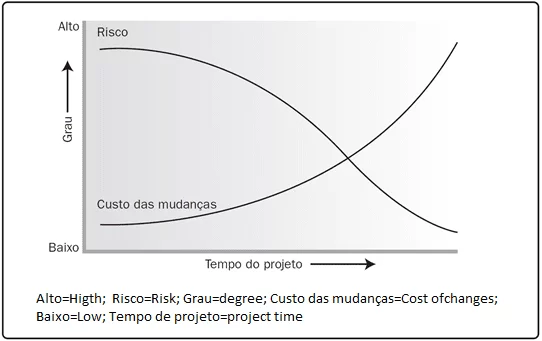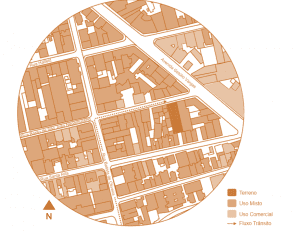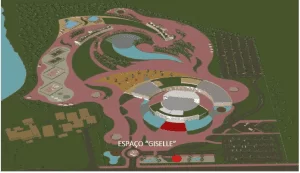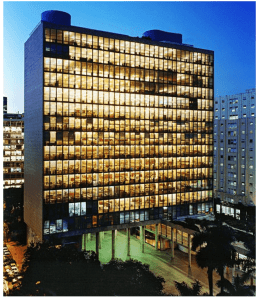REVIEW ARTICLE
SOUZA, Faine Segura De [1], HENRIQUE, Rosana Maria [2]
SOUZA, Faine Segura De. HENRIQUE, Rosana Maria. Civil work planning: Project constraints. Revista Científica Multidisciplinar Núcleo do Conhecimento. Year 05, Ed. 06, Vol. 05, pp. 154-166. June 2020. ISSN: 2448-0959, Access link: https://www.nucleodoconhecimento.com.br/architecture/project-constraints
SUMMARY
The planning of a civil work concerns the orderly implementation of projects in buildings and, in this area of operation, the project constraints are the factors that determine the objectives and use of what will be accomplished. The present work presents a planning guided by norms and laws, followed by the definition of what a project is, its summarized life cycle and the need to avoid common errors, in order to achieve the objectives of a visually pleasing final product, which does not impair its functionality and allows changes to accompany technological innovations. To strengthen the idea of avoiding errors, the effect of the risk of changes in relation to their costs is presented. Finally, the main project constraints are offered and how they interfere in the feasibility of the project. This work was developed based on the knowledge acquired in the academic field and bibliographic research.
Keywords: Construction Planning, civil project, project constraints, life cycle.
1. INTRODUCTION
Successful buildings follow a plan that seeks to meet the present needs of users and future trends. The present study has the premise of directing the critical eye of those responsible for civil works in order to achieve effectiveness in the planning and control of works. In view of the most recurrent non-conformities in buildings, the following conjectures were released: How could buildings and common spaces be better planned to prevent deployment errors? And what adjustments could be made in buildings to prevent damage to art and damage to space?
In addition, the present study provides subsidies demonstrating that, in the mirror of a conductor, the thinking of the construction manager must progress from a linear to multidisciplinary model, making him able to adequately predict the tangible and intangible variables that can intervene in the various stages of a project. To this end, there is a need for the manager to qualify in planning models, noddedly, those focused on the management of teams and projects, and preventive monitoring systems to ensure the comfort and safety of employees.
The theme is broad, which is why it is not premised to exhaust the possible conjectures, but rather to provide subsidies to good practices in planning works, mainly using the wide access to information and channels for dissemination of knowledge, norms, laws and trends, currently available.
Question Problem: How can the use of technologies and knowledge prevent the occurrence of nonconformities commonly observed in buildings?
Problem: The constant need to renovate new buildings in order to correct structural defects/imperfections; and/or implement measures to adapt them to regulatory criteria or use in principle intended.
Part of this problem is due to errors made at all stages, either by negligence or due to lack of supervision and/or technical guidance.
General Objective: To point out the main conditions that must be observed to carry out a good construction project.
Specific Objectives: To raise the main points that should be considered when planning a work; direct the paths to the realization of a building project and indicate tools to support the process of planning and control of civil works.
Justification: there is a need for a more judicious look at civil construction, because it is inconceivable that there will be so many errors, given that our modern society presents a variety of technologies to support in the areas of engineering, economics and industry, permeated with the advance of information technology in a Fourth Industrial Revolution[3] and a culture of digital natives[4].
Cities grow with amazing speed and need an acuity in order to provide good quality services that can guarantee the needs of people and for this there is a need for good projects, from start to finish, thinking ahead of the needs present.
In view of the current demands for sustainable development, it is essential to work on designing within the current conjectures. The government has widely publicized the Sustainable Development Goals (SDGs) [5] that aim at sustainable use of resources and theorists, following the trends, postulate this need and justify them as in the words of Douglas Farr (2013), who points out the sustainable urbanism as an important aspect of changing the posture of the new generations in their projects and enterprises and its adoption as a social norm to be practiced by all involved in the urban planning process in unison in harmony to achieve a shared purpose.
Understanding that if some measures and a targeted study are taken, it is possible to carry out a planning that meets the needs and requirements of quality and sustainability.
For this theoretical study, the research method was used in physical and electronic media such as books and websites.
2. THEORETICAL FRAMEWORK
Lack of planning is one of the reasons for consecutive errors. The project management vision follows parameters that define the quality of the enterprise, from conception, through execution to completion, respecting legal procedures. The first thought that should upset a designer is to avoid problems in their ventures are contracts, laws and licensing. Contracts with customers, employees, allotments or land divisions may contain clauses even stricter than government laws themselves.
Laws, rules and guidelines must be complied with, if not, they can generate fines and even embargoes on works. We can mention the Code of Works and Buildings (COE), in São Paulo was approved by Law nº 16.642, of May 9, 2017 and regulated by Decree nº 57.776, of July 7, 2017, of procedures related to civil construction.
This decree regulates administrative and executive procedures and establishes general and specific rules to be obeyed in the design, licensing, execution, maintenance, use and supervision of works, buildings, equipment, complementary works, terraces and furniture, within the limits of the properties in question. which are located (PMSP, DECREE No. 57.776, Art. 1).
In compliance with the regulations, the owner or his representative will request from the competent authorities the documents to control the building activities (guarantee the regularization of the property), which are the permits, such as permits: demolition, approval, execution; certificates of completion, dwell, among others.
Recommendations for NRs technical standards should be commendable when provided for approvals when meeting safety, protection, comfort, health requirements, including administrative, organization, and planning guidelines in these requirements.
To support the procedures there are the NBRs, with standards and guidelines of how to do, but not mandatory, however if met value the enterprise and strengthens that the enterprise a planning, being able to receive valued certifications in the market.
The use of NRs and NBRs brings several benefits to the project such as quality, productivity, cost reduction, competitiveness in the market, use of resources and the guarantee of a great final product.
Books, manuals and guides also contain great guidance materials for efficient planning, many of them being a reference in the area of Project Management that expose models and techniques for planning and controlling civil works, such as Gantt Diagram [6], Critical Path Method and Evaluation and Review Technique b (PERT / CPM) [7], Balance Lines [8], Location-based Management System (LBMS) [9] and 4D Modeling – BIM [10] (MAGALHÃES, 2018).
2.1 DESIGN
Project is a planned project, results-oriented, having activities with beginning and ending, to achieve a clear and defined objective (BRASIL, 2011). There are several reasons for the emergence of a project that basically aims to meet the need of society, a group or individual, meet a reorganizational need, changes due to technological advances, meet legal requirements and meet or correct environmental impacts. Having its beginning with the analysis of the a priori feasibility of the owner’s request or to meet a demand and then elaborate a term of opening of the project to document and officialize the enterprise where the objectives and the desired scenario should be contained after the implementation of the project, define the scope, deadlines, costs, premises and restrictions, identify risks, define team and infrastructure , identify stakeholders and collect approval and set a date for the start of the project.
In a project one takes into account the solutions to the main problem and to the secondary related to the needs of users and the neighborhood, to the restrictions found, with known technical foundations and a language with representations that can be understood by all.
The life cycle is composed of the specificities of the project and can be influenced by the unique aspects of the organization, sector, method, development or technology used. But basically structured as: Project start; Organization and preparation (Planning); Execution of the work; closure of the project, according to PMBOK (2017). Brazil (2011), plots a similar simplified organization chart, as shown in Figure 1.
Figure 1 – Lifecycle of a project.

The planning and composed of processes carried out to plan the actions of the project in order to achieve the objectives for which the project was created (BRASIL, 2011, p. 29), during these processes there is monitoring and control that:
These are the processes carried out to observe the execution of the project, so that possible problems can be identified at the appropriate time and that preventive and corrective actions can be taken, when necessary, to control the execution of the project. The main benefit of this process group is that project performance is observed and measured regularly to identify variations in relation to the project management plan. (BRASIL, 2011, p. 29)
If well planned a project has great chances of success and it is not good to count on luck. Registration helps you identify where to define rules or guidelines for aligning team actions and a quality report (PMBOK, 2017).
Planning processes involve defining the scope that includes developing a schedule, cost plan, defining quality, team, planning communication, identifying and analyzing risks, planning acquisitions and hiring, converging to consolidate a project management plan.
All this work is done to eliminate or minimize risks due to design changes, non-compliance with standards or errors.
To maintain a control it is important to assess the risks of each project possibility, change the project to a solution in order to avoid the risks or insert into the project a structure that can eliminate the risk. Risk logging provides information about threats and opportunities that occur during project execution, maintaining a risk report provides information about overall project risks, and summarized information about specified individual risks (PMBOK, 2017).
Project planning should provide stakeholders with possible influence on the final characteristics of the building, so that project changes are not significant at the time of execution in order to avoid significant increases in costs and schedule. According to Figure 2, these changes are welcome to the beginning of the project because they are low cost and unwanted in execution where costs increase progressing to its completion.
Figure 2 – Impact of variables throughout the project.

Lessons learned are used to improve project performance and avoid repeating errors that can happen throughout the lifecycle. It is important to record the problems and solutions, because from this define rules of actions. Maintain quality inspection from the organization of the construction site, materials received, from the teams, to the conclusions, recording the improvements, the corrective actions, thus maintaining a quality control.
Quality control is important to avoid errors.
Meeting customer requirements by overloading project staff can result in reduced profits and increased levels of overall project risks, employee friction, errors, or rework. Meeting project schedule objectives by speeding up planned quality inspections can result in undetected errors, reduced profits, and increased post-implementation risks (PMBOK, 2017, p. 274).
It is taken care of a planning based on the constraints that can interfere in the decision of the scope and its objectives. Therefore, it is considered that it is preferable to spend time with good planning between teams, reviewing the plans of the various areas that make up the project to prevent errors, aiming at the quality in deliveries than after an inspection or after use problems are found. Inspections are important to keep the error out of customer reach, but it is preferable to be exempt.
Appearing the need for changes in the scope of the project it is important that there are plausible conditions for this, that is, identify the character of the change, in order to minimize rework, extension of deadlines, delays and aiming at the motivation of the team, remembering that a change can have an effect on structure, hydraulics, landscaping, electrical and others.
For all factors that influence the project and its quality, there are limiting or targeting conditional on the project management information system, the quality management software used to identify errors and variations in the steps, regulations of government agencies and standards, standards and guidelines specific to the area of application.
2.2 BASIC CONSTRAINTS OF A PROJECT
Douglas Farr (2013) studies based on the American lifestyle and cites that “the most fundamental choice americans make is where to live; this decision determines much of the unforeseen consequences of our lifestyle”, this phrase serves any human being anywhere on the planet, as it affects health and happiness. Where to live is a luxury that not everyone can accurately determine, but you can choose how this villa will be: apartment, single storey house or house; on a land that will have its characteristics and provide certain design choices.
For Ching (2017), climate factors, topography and habitat influence project decisions and if it is “… responsive and sustainable respects the natural attributes of a place, adapts the shape and layout of a building to the landscape and takes into account the course of the sun, wind speed and water flow…” to accommodate people with comfort, save energy and material resources.
The planning of a construction site is something that precedes the execution, so it is something predictable, because there are procedures until its approval that collect information, the conditions of nature and services on site, for decisions of the specifications of a project. Planning takes place for the good progress of the construction of leasing, material acquisition, logistics, and follows during the execution operations, so it must take into account the unpredictable factors of production, labor, deadlines, and coordination of multiple activities.
There is no fixed recipe for building, there are many ways and with creativity and criteria it is possible to expand the choice of how to improve what is being built (LENGEN, 2014). For basic constraints, the factors that influence the design of the project were considered in order to recognize it as good and what is composed. And for this it is necessary to understand that a good open responds to the constraints of the project.
The climate influences the choice of the designer, restricts the use of certain types of materials and offers opportunity to overcome and order to innovate or maintain the traditional. According to Lengen (2014), the house serves to protect people and accommodate goods from weather conditions such as heat, rain, cold or humidity, and so it is important to observe the local climate first.
According to Lengen (2014), topography, that is, the foma of the terrain or vegetation causes the spaces to change, depending on the relief can make up spaces at different levels joined by stairs or ramps, keeping at the same level spaces that have relationship with each other.
The analysis of the land or site and its surroundings is the process of study of the contextual forces that influence the way in which we will implement a building and guide its spaces, configure and articulate its external seals and establish its relations with the landscape. All terrain analyses begin with the collection of physical data from the site. (CHING, 2017, p. 6)
Of course, one often tries to make the most of the land, planing and making walls of cliff, containment and waterproofing, spending more on the foundation and finally not having a pleasant environment in the environments that are below ground level. But the best is that the plant follows the shape of the land (LENGEN, 2014), so the occupation and construction of the land should minimize the interference in drainage standards (CHING, 2017), because one of the biggest enemies of the building is water.
A soil study is necessary for analysis of what can be built on it, seeking to identify the type of soil by probing and its characteristics of permissible loading capacity, density, shear strength, groundwater height (CHING, 2017).
The orientation, that is, the position of the building in relation to the path that the sun makes between sunrise and if it is, influences natural lighting through insolation. The relief and vegetation, the location influence the air intake by the winds, as well as the shape of the building and the position of walls and doors and windows chosen.
The position of the spaces in the place should tend to facilitate the flow of people and vehicles, the compartments of transient permanence do not require accurate studies in their orientation, and may even be oriented to the North and West quadrant, which are in fact the most inconvenient with regard to the insolation of the facades and interiors for our latitude of 23°52′ (PAIXÃO, 2014, p.18).
Liners and roofs tend to facilitate airflow, ventilation and rainwater runoff.
What is relevant in any discussion about sustainable design is that most of the energy consumption of the building industry is not attributed to the production of materials or the construction process, but to the operational processes – heating, cooling and lighting of buildings. This means that in order to reduce energy consumption and greenhouse gas emissions generated by the use and maintenance of buildings throughout their useful life, it is necessary to design, deploy and configure buildings properly, as well as incorporate heating, cooling, ventilation and natural lighting strategies (CHING, 2017, p. 5).
To complete or improve the lighting and cooling of the environments it is expected to make the appropriate choice of passive solar heating that refers to the use of solar energy to heat the internal spaces of a building without requiring mechanical equipment that requires additional energy, according to Ching (2017) and postulates that there are two essential elements in the entire passive solar system : the glass or transparent plastic oriented to the north for the capture of solar radiation (in the southern hemisphere) and a thermoaccumulating mass for the collection, storage and distribution of heat, oriented to receive the maximum sun exposure that are the masonry in general, these attributes aims to radiate health to the house and its occupants. As an essential component of sustainability, sustainable buildings seek to provide healthy environments in an efficient manner, using ecologically based principles (CHING, 2017).
The master plan is a municipal term that regulates and defines land use and occupation to control land patterns, control building density, direct development to areas with adequate infrastructure and amenities, protect environmentally sensitive areas and conserve open space. (CHING, 2017)
Anywhere, rural or urban, there will be a standard of occupation that will regulate the types of activities, the volume of the building, the retreats and other items, so it is necessary to consult the municipal standards.
The spaces depend very much on the type of use, if it is residential must meet the specific needs of its future residents, if it is collective must meet customs and culture, but in both cases it is important to think about the green areas, natural lighting, aeration, accessibility and safety, thinking about the use of each and the furniture that will enter them. A good layout of spaces can save area. (LENGEN, 2014)
Considering the research, it can be said that there is enough information to plan and control a project available to everyone, it is enough a little acuity and common sense to meet the conditions for a good project and satisfactory results.
With a range of existing materials extends creativity, gear can be slender or present incredible curves. Materials can set deadlines, the use of prefabricated materials can speed up the process, but can be of higher cost. There is a diversity of materials, techniques and technologies that are renewed every day, many accessible; and a dissemination of knowledge in specialized websites which enables several innovative solutions for architecture and engineering. Given this it is the role of the architect to filter the possibilities before the design constraints, adjust the dream of the interested parties to reality and adopt the best solutions for each case. Creativity is a reflection of the experience of the person who creates the project and in the event that a construction has the participation of all involved is important for the exchange of ideas, between employees and the client, in mutual trust, because knowing how to identify the needs of the client is as important as listening to the partners of the work. Within the perspectives of the project can be adopted a model, style or trends to make up the artwork and can not be left out the idea of sustainability that is a subject that is in all spheres, in a global effort to minimize the negative environmental impact of development through efficiency and the conscious use of materials, energy and resources.
This work does not exhaust the theme and can contribute to a reader and designer to know that it is important to listen to the client carefully, which encompasses the entire group that will be users of the spaces, allow a process of knowing the client, its purposes, its vision, its mission and open to the contribution of employees; see and hear the local nature and its possibilities, meeting the requirements of topography, climate and orientation, so it is possible to take good advantage of natural resources and meet the sustainability requirement.
3. FINAL CONSIDERATIONS
A good project is that planned observing the project constraints solving most of the existing problems, considering the land and its surroundings, respecting norms and laws, seeking other solutions when necessary, predicting and creating solutions to the main problems created by the existence of the enterprise, functionality, technically well established and efficient in all its structures and details, as well as harmoniously elaborated artistically.
The constraints should not be obstacles or reason to standardize tastes and wills, because everything should contribute to broaden the dialogue between the client and the professional and find more appropriate solutions for a given context.
REFERENCES
BRASIL. Metodologia de gerenciamento de projetos do SISP. Brasília: Ministério do Planejamento, Orçamento e Gestão, 2011.
CHING, Francis D.K.. Técnicas de construção ilustradas, 5. ed. São Paulo: 2017.
FARR, Douglas. Urbanismo sustentável: desenho urbano com a natureza. Porto Alegre: Bookman, 2013.
LENGEN, John Van. Manual do arquiteto descalço. São Paulo: B4 Editora, 2014.
MAGALHÃES, RM; MELLO, LCBB; BANDEIRA, RAM. Planejamento e controle de obras civis: estudo de caso múltiplo em construtoras no Rio de Janeiro. Transinfo [Internet]. 2018 [acesso em 29 nov. 2019]; 25(1): 44-55. Disponível em: http://www.scielo.br/scielo.php?script=sciartt ext&pid=S0104-530X2018000100044&lng=pt&tlng=pt
PAIXÃO, Luciana. Um Guia do Conhecimento em Gerenciamento de Projetos (Guia PMBOK). 6ª ed. Pennsylvania: Project Management Institute Inc., 2017.
PROJECT MANAGEMENT INSTITUTE. Um Guia do Conhecimento em Gerenciamento de Projetos (Guia PMBOK). 6ª ed. Pennsylvania: Project Management Institute Inc., 2017.
SÃO PAULO. Gestão Urbana da PMSP. Decreto nº 57.776, de 7 de julho de 2017. Regulamenta a Lei nº 16.642, de 9 de maio de 2017, que aprovou o Código de Obras e Edificações do Município de São Paulo; define os membros da Comissão de Edificações e Uso do Solo – CEUSO. Diário Oficial da Cidade de São Paulo. 2017 jul. 8; Seção Leis. p 1.
APPENDIX – FOOTNOTE REFERENCES
3. Reputable systems in the impacts caused by the advancement of computer technology. It became known in Germany by the term Industry 4.0 and its purpose is to integrate man, technology and information through smart factories.
4. Born in the digital age, that is, after 1980, they have access to digital network technologies and have computing skills and knowledge, being part of a common global culture.
5. 3. There are 17 objectives of the 2030 Agenda which is an action plan for people, for the planet and for prosperity. It also seeks to strengthen universal peace with more freedom. We recognize that eradicating poverty in all its forms and dimensions, including extreme poverty, is the greatest global challenge and an indispensable requirement for sustainable development. Proposed by the UN in 2015. (https://nacoesunidas.org/pos2015/agenda2030/)
6. Developed by Henry L. Gantt in 1917, graphical representation of activities on a time scale.
7. Union of the network schedule, represented by arrows by the critical path method, possessing a deterministic character, developed in 1957 by E.I. Dupont de Neymours with the network schedule of technique evaluation and review of probabilistic programs, in 1957 by the U.S. Department of Defense.
8. Chart technique in a Cartesian plane with lines that represent an activity in its respective time, being on the x-axis the time and on the y axis the accumulated values.
9. It results from the research of the balance line technique and the Flowline method and improves the workflow, avoiding the idleness of the workers.
10. Concept of integration and modeling of the information of a project in a 3D virtual model of the building.
[1] Architect. Post graduation: Specialization in planning and control of works.
[2] Biologist. PhD in Science. Master’s degree in Ecology. Specialization in Management and Environmental Practices. Improvement in socio-environmental management applied to hydride energy. Improvement in Individual Training in Industrial Waste Treatment.
Sent: December, 2019.
Approved: June, 2020.





